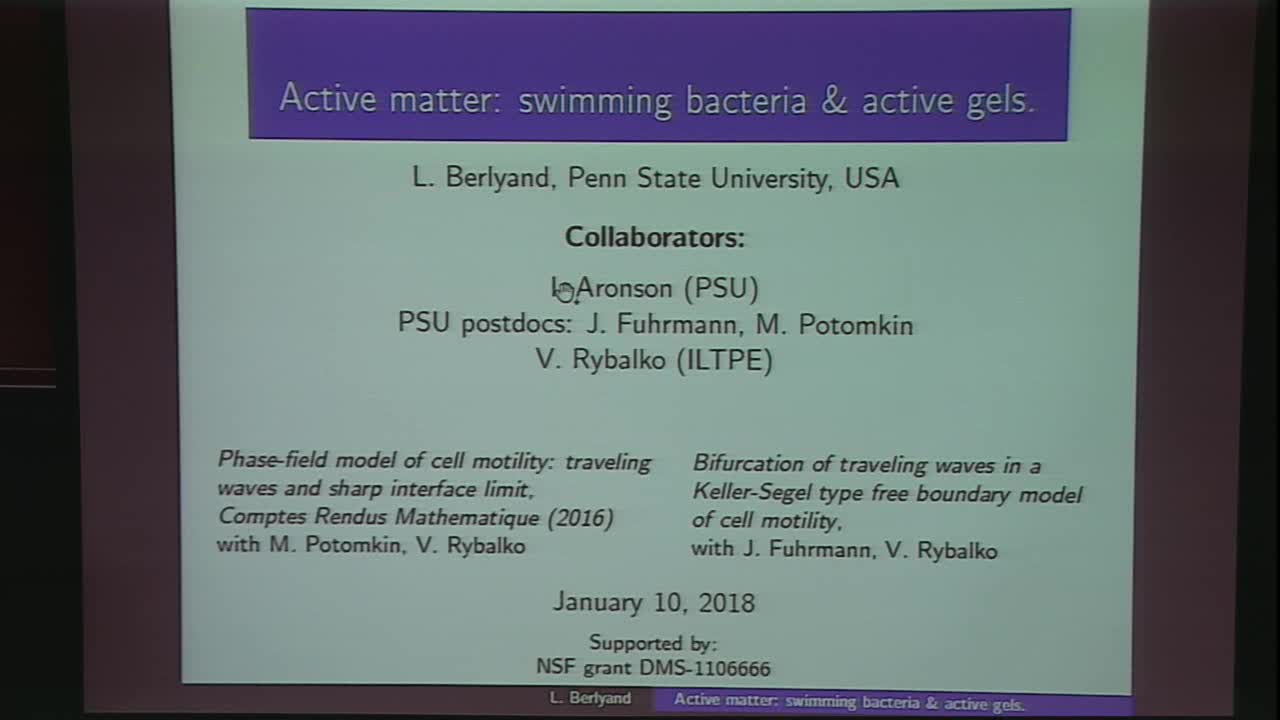Active matter: Swimming bacteria and active gels
Presenter
January 19, 2018
Keywords:
- motility, active gel, phase-field model, free boundary problem, traveling waves and symmetry breaking
Abstract
We begin from reviewing two concepts, motility in living systems, and active matter (also known as active materials). The main part of the talk is concerned with PDE models of two specific types of active matter: (i) suspensions of swimming bacteria and (ii) active gels that are networks of cross linked filaments subjected to action of energy transducing molecular motors. First we present a brief review of our past work on bacteria swimming in Newtonian fluids and current work in progress of bacteria swimming in liquid crystals. These has been preformed in a close collaboration with experimental group of I. Aronson, who will present a talk on this subject. Next we consider PDE models of motility of eukaryotic cells on a substrate. Our goal is to capture mathematically the key biological phenomena such as steady motion with no external stimuli and spontaneous breaking of symmetry. To this end we study two models of the cell’s cytoskeleton (active gel): the phase-field model and the free boundary model. In the analysis of these models our focus is on establishing the traveling wave solutions that are the signature of the cell motility. We also study breaking of symmetry by proving existence of non-radial steady states. These results are obtained in collaboration with J. Fuhrmann, M. Potomkin, and V. Rybalko.
